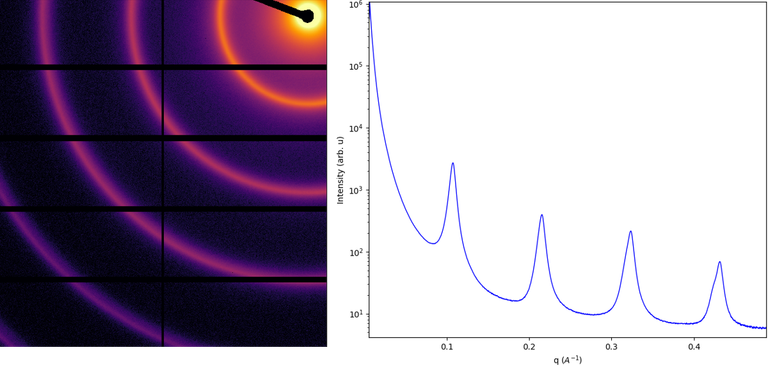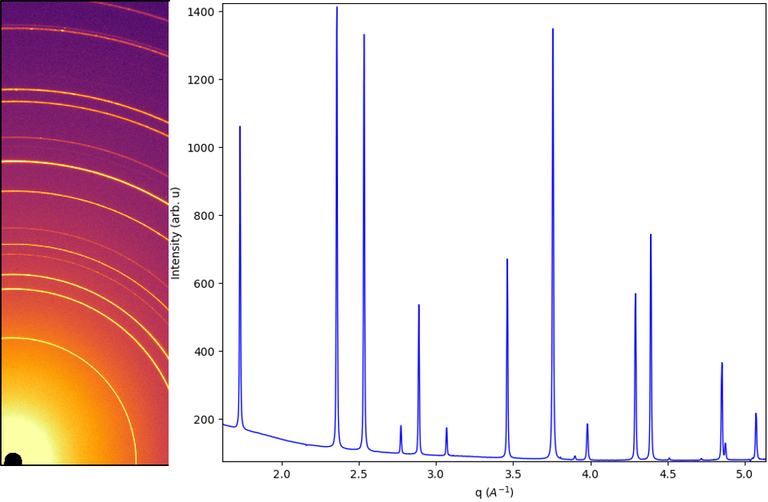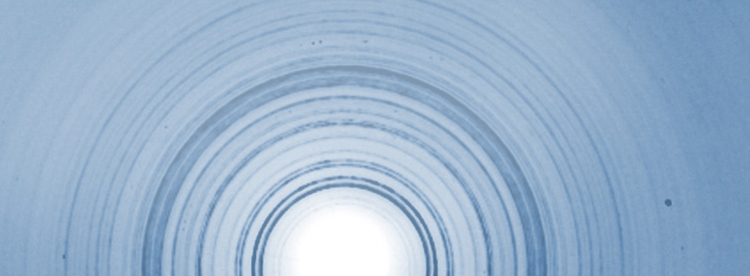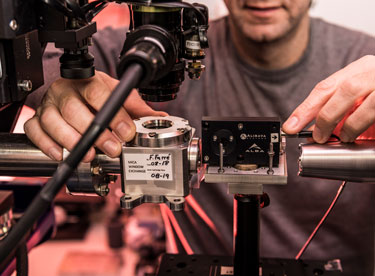PROPOSAL SUBMISSION
| If you already performed experiments at ALBA, ensure that all your past experimental reports and related publications are uploaded into the ALBA user office portal. Your feedback from past experiences is also important for us. |
Users information
Please, check the ALBA website for users, where all the practical information about how/when to submit a proposal, funding, regulations and more practical information can be read.
Writing a proposal
In the applying for beamtime section you will find the updated information. Essentially, the proposal must be written in English, containing 2000 words and a maximum of 3 pages for a standard proposal. The typical sections include:
- Abstract (approximately 300 words)
- Scientific background
- Objectives
- Experimental method
- Expected results
- Justification of the beam time requested
- References.
We highly recommend to contact the beamline staff prior to the proposal submission. You have to upload the proposal and fill the requested information via the user office portal.
After the evaluation procedure you will receive a communication with the call results. If granted, the main proposer will also receive an email to prepare the visit. Please, read it carefully since all the steps to prepare your visit will be there.
BEFORE YOUR EXPERIMENT
Preparing your visit
If you proposal is granted, you will need to prepare the visit with enough time. All users must follow the rules to enter ALBA for their experiment. In the dedicated ALBA website for users to prepare the experiment, all the information is clearly explained and updated. Please, read it carefully and follow the steps. In case of doubts for administration, contact the user office.
Experiment preparation
Proper configuration of the NCD-SWEET beamline is essential for the feasibility of your experiment. We strongly recommend discussing your experiment and set up sufficiently in advance with your local contact. In this section you will find information about the experimental conditions and the holders available at NCD-SWEET, and how to send your samples to ALBA in the event you are not able to travel with them.
Please, check the sample environment of NCD-SWEET beamline in the beamline information section to prepare your experiment.
Sending your samples/equipment to ALBA
Users have to meet the costs of sending their samples/equipment to ALBA and are responsible for doing all the paperwork involved in their shipment, including documents related to biosafety in the case of biological samples. Any item and sample entering ALBA must be declared within the user declaration in the ALBA User Office portal.
Please note that each country has its own specific regulations on these issues and we advise you to look for information well in advance of the date of your experiment. Normally, your home institution will be able to advise you on these issues.
If sending packages from outside of European Union, please, be aware that the customs can only be processed if ALBA accepts the package, but the cost is covered by the user. This can take up to one week once the package is in the border, since it will not be released until custom taxes are covered by the user with ALBA as intermediate. We strongly recommend to contact your local contact to help you.
Independently of the safety paperwork required for the shipment of your samples, your proposal must fulfill ALBA safety requirements. Please visit ALBA User Office website for details on this issue.
Users must inform the local contact about the anticipated date of reception of the samples. Please include the following information for the consignee:
---------------------------------------------------------------------------
** Name_of_the_Local_Contact ** (NCD-SWEET)
ALBA Synchrotron – CELLS
Carrer de la Llum 2-26
08290 Cerdanyola del Vallès
Barcelona, Spain
Tel.: +34 93 592 40 11
---------------------------------------------------------------------------
RUNNING YOUR EXPERIMENT
How to contact your local contact?
The NCD-SWEET beamline staff contact details can be found here.
Some additional information:
Your local contact will have the beamline ready at 9:30 h. He/she will be on site between 9:30 h-18:30 h. After 18:30 h, your first contact for any issue during the experiment will be the Floor Coordinator (FC): 4401, or 608018721 (mobile) (please dial 0 before dialing the mobile phone number).
Before calling to the floor coordinator, you are kindly requested to consult the Frequently Asked Questions & the user guide.
Other useful phone numbers during your experiment at NCD-SWEET are the following:
- NCD-SWEET Control Hutch phone number is (+34 93592) 4011.
- Main entrance (+34 93592) 4498.
Data acquisition & User guide
The data acquisition system is quite friendly-user for most of the users with some experience in synchrotron radiation facilities, however can be a bit difficult for beginners. For beginers but also for expert users, you can download the user guide to be familiar with the beamline data acquisition system and most frequently used software and macros.
Refilling the liquid nitrogen dewar
If you use the liquid nitrogen dewar for the Linkam setuo, you can refill it from the 25L dewar available at the beamline, always following the safety protocol. If the 25L dewar needs to be filled up, please ask your local contact/floor coordinator for refilling it. Users are not allowed to manipulate the LN2 extraction point.
Spatial Calibration
Spatial calibration is a must to calibrate the recorded reciprocal space images. At the beginning of your experiment, the local contact will measure the calibration powder (from the NIST) and it will help you to do the calibration using pyFAI. At NCD-SWEET beamline, typically the SAXS detector is calibrated using silver behenate while the WAXS detector is calibrated with chromium (III) oxide.
Silver Behenate (AgBh)
Silver behenate was characterized using the powder diffraction technique. With the National Institute of Standards and Technology's standard reference material silicon as an internal standard, the long spacing of silver behenate was accurately determined from the profile-fitted synchrotron diffraction peaks, with d001 = 58.380 (3) Å. Because silver behenate has a large number of well defined diffraction peaks evenly distributed, it is suitable for use as an angle-calibration standard for low-angle diffraction. However, care must be taken if silver behenate is to be used as a peak-profile calibration standard because of line broadening (Huang TC et. al. J. Appl. Cryst. 26 (1993), 180-184) [Figure 1].
|
2D image & 1D profile |
Order |
d(Å) |
q(Å-1) |
|---|---|---|---|
 |
1 | 58.3800 | 0.1076 |
| 2 | 29.1900 | 0.2153 | |
| 3 | 19.4600 | 0.3229 | |
| 4 | 14.5950 | 0.4305 | |
| 5 | 11.6760 | 0.5381 | |
| 6 | 9.7300 | 0.6458 | |
| 7 | 8.3400 | 0.7534 | |
| 8 | 7.2975 | 0.8610 | |
| 9 | 6.4867 | 0.9686 | |
| 10 | 5.8380 | 1.0763 |
Figure 1. 2D pattern of silver behenate (AgBh) and the integrated 1D profile obtained at NCD-SWEET (12.4 keV, 2.1 m camera length). The tabulated D-spacing with the corresponding q values are also presented.
Chromium(III) oxide (Cr2O3)
Chromium(III) oxide powder presents a corundum structure intended primarily for use as internal standards for quantitative X-ray diffraction analysis. This oxide offers linear attenuation for Cu kα radiation of 912 cm–1 that allows the user to nominally match the standard to the unknown in order to minimize the effects of microabsorption. An analysis of the lattice parameters and phase fractions determined from X-ray powder diffraction data indicated that this material was homogeneous with respect to diffraction properties [SRM 676; Alumina Internal Standard for Quantitative Analysis by X-ray Powder Diffraction; National Institute of Standards and Technology; U.S. Department of Commerce: Gaithersburg, MD (20 September 2005)]. The Cr2O3 is supplied by NIST (Standard reference material 674b) [Figure 2].
|
2D image & 1D profile |
Order |
d(Å) |
q(Å-1) |
|
Order |
d(Å) |
q(Å-1) |
|---|---|---|---|---|---|---|---|
 |
1 | 3.6308 | 1.7305 | 11 | 1.5788 | 3.9795 | |
| 2 | 2.6652 |
2.3574 | 12 |
1.4648 | 4.2895 | ||
| 3 | 2.7945 |
2.5340 | 13 | 1.4315 | 4.389 | ||
| 4 | 2.2660 | 2.7727 | 14 | 1.3938 | 4.5079 | ||
| 5 | 2.1752 | 2.8884 | 15 | 1.3326 | 4.7148 | ||
| 6 | 2.0476 | 3.0685 | 16 | 1.2962 | 4.8473 | ||
| 7 | 1.8154 |
3.4610 | 17 | 1.2901 | 4.8703 | ||
| 8 | 1.6727 |
3.7562 | 18 |
1.2397 | 5.068 | ||
| 9 | 1.6118 |
3.8982 | 19 | 1.2103 | 5.1915 | ||
| 10 | 1.5803 | 3.9759 | 20 | 1.1958 | 5.2542 |
Figure 2. Chromium (III) oxide scattering pattern and the integrated 1D profile recorded at NCD-SWEET beamline (12.4 keV, 229 mm camera length). The tabulated D-spacing with the corresponding q values for Cr2O3 are also presented.
Data backup
During your experiment, all the data are stored in the ALBA storage system servers in a Raid 6 system in order to protect your data in real time. Additionally, we have an automatic backup system controlled by a robot to preserve your data for a very long time. During the experiment, most of the users copy the experimental data in their own external Hard Disk (USB 2.0, USB 3.0, eSATA or SATA) but they can also be downloaded remotely when the experiment has finished.
Currently ALBA guarantees data storage up to 6 months after your experiment terminates. We are currently working to extend this data storage time in the future.
AFTER YOUR EXPERIMENT
After your experiment, please leave the beamline, laboratories and any used item/space in its original place and ready for the next user. Also, remember to follow the ALBA general guidelines.
Your feedback is really important for us. It will help to improve the beamline and to offer a better experience to the users.
Remote access to your experimental data
ALBA provides remote access to the experiment data using the SFTP (Secure FTP) protocol. Therefore, all beamline users can download their experimental data connecting to:
- Protocol: SFTP
- Host: userdata.cells.es
- Port: 443
- Username: <proposal account>
- Password: <proposal password>
- Directory: /DATA
You can connect using any software that understands the SFTP protocol, here are some configuration examples for the most typical programs:
- Windows. Download WinSCP here
- Linux clients
- MacOS. Download CyberDuck here
DATA ANALYSIS
* The experimental data can be remotely downloaded following the steps explained above.
Software for scattering data analysis
There is plenty of software to analyze the scattering data in transmission (SAXS & WAXS) and reflection mode (GISAXS & GIWAXS). In these websites you can check a non-comprehensive list of available software for data analysis.
Some of the most common ones:
- ATSAS: A program suite for SAXS data analysis from biological macromolecules developed by Svergun Group at EMBL-Hamburg. Includes primary data processing, Ab initio methods, rigid body modelling, analysis of mixtures and flexible systems, and PDB oriented tools.
- PyFAI: PyFAI is a python library for azimuthal integration of X-ray/neutron/electron scattering data acquired with area detectors.
- DAWN: An open source software (license) for the visualization and processing of scientific data. Although specifically developed for data from synchrotron based techniques, many of the features of DAWN are useful in other fields. DAWN loads data from many common formats (text files, tiffs, hdf5…), as well as those specific to X-ray techniques (NeXus, EDF, MAR…).
- BornAgain: Open source research software to simulate and fit GISAXS.
- Bubble: Fast on-line 1D integration for small and wide angle diffraction.
- DPDAK: tool developed for (online analysis) of large sequences of small angle scattering data.
- GIDVis: a modular MATLAB program to analyze grazing incidence diffraction images. A manual is also available.
- GIXSGUI: MATLAB-based software for visualization and reducyion of Grazing Incidence X-ray Scattering data. There is a dedicated paper.
- GIuSAXS: a tool to inspect GISAXS and GIWAXS data made by the collaboration of different scientist.
- ImageJ: Java image processing program. To read .edf files, you need to download this .class file and save it in the "plugins/Input-Output" directory of ImageJ. Then you can open a .edf file with imageJ: Plugins/Input-Output/EdfRead. More information can be found here.
- McSAS: Monte Carlo regression package for SAXS data analysis. There is a publication dedicated about this software.
- Medved: Load and visualize integrated 1D patterns and much more. Check the related paper.
USEFUL LINKS
CXRO: X-Ray interactions with matter
GISAXS wiki: The main page for GISAXS community
SAS: The home for Small Angle X-ray Scattering
Saxier Forum: A webpage designed by Svergun Group at EMBL-Hamburg. Questions about SAXS data analysis can be posted on the web and are answered by the members of the group. The users are also invited to participate in the feed-back.
X-ray Data Base: Website based on the sqlite X-ray data base also available as python module
X-ray Data Booklet: Digital version of the well-known X-ray Data Booklet also in format of periodic table






